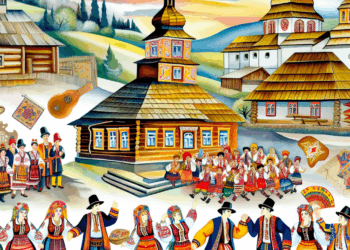Introduction
The issue of Chernivtsi’s return to Romania is raised from time to time in public and expert circles. The city, known for its unique cultural and architectural heritage, as well as for its historical attachment to Romania, has many factors that can be considered when analysing this topic.
Historical Foundations
Chernivtsi, now the administrative centre of the Chernivtsi Oblast of Ukraine, has a long and complex history. Since the 19th century, when the territory of Bukovina became part of the Austro-Hungarian Empire, the city became an important cultural and educational centre where different ethnic groups coexisted: Romanians, Ukrainians, Jews, Poles and others. In 1918, after the collapse of Austria-Hungary, Bukovina was handed over to Romania. This time was a “golden era” for Chernivtsi, in particular due to the creation of the Chernivtsi University, which was founded in 1875 and became one of the leading universities in Europe.
However, in 1940, amid World War II and the changing geopolitical situation, northern Bukovina was annexed by the USSR, which determined the modern status of the city. The historical memory of the Romanian heritage is preserved in Chernivtsi’s architecture, such as the University building, which is a UNESCO World Heritage Site and epitomises local cultural traditions.
Cultural links
Cultural ties between Chernivtsi and Romania remain strong. For many residents of the region, the Romanian language and culture are part of their identity. According to sociological surveys, a significant portion of the population respects and supports the Romanian language, and many have a take from Romanian history and culture.
The University of Chernivtsi, where renowned Romanian scholars and writers taught, created a unique academic environment where Romanian and Ukrainian cultures intersected. The city’s student life, literature and art also reflect this diversity.
Experts’ views
Experts in geopolitics and ethnic politics see at least two points of view on the issue of Chernivtsi’s possible return to Romanian membership. On the one hand, some analysts argue that the existence of a historical and cultural link could be the basis for a change of direction. On the other hand, many point out that in the conditions of the modern world the issue of borders is losing its relevance, and it is simply not advisable to lose the peaceful coexistence of the two countries.
Ivan Mateescu, a professor at the Romanian University in Bucharest, pointed out that “the return of Chernivtsi to Romania could create new opportunities for further co-operation between the two states, especially in the economic and cultural fields”. However, he also warns against abrupt changes in policy, which could lead to instability in the region.
Legal aspects
From a legal point of view, the issue of Chernivtsi’s return to Romania is complex and multifaceted. The rulings of international law, in particular, point to the importance of respecting the sovereignty and territorial integrity of existing states. Ukraine, as an independent state, has the right to its territory, and the international community supports this principle.
At the same time, it is worth mentioning the respected right of “self-determination of peoples”, which is recognised in international practice. However, the application of this principle also requires broad popular support, which creates additional legal complexities.
Geopolitical trends
From a geopolitical perspective, the region is of interest in light of contemporary conflicts and European Union integration processes. Romania, as a member of the EU and NATO, has its own geopolitical interests in stability and security in the Eastern European region. The potential impact of the situation in Chernivtsi on the relations between Ukraine and Romania may cause conflict risks. In addition, the return of Chernivtsi to Romania may cause a mixed reaction from Russia, which is also an important factor.
It should be taken into account that both Ukraine and Romania face challenges related to internal political processes, economic crises and the need for reforms. Direct changes in the borders may divert attention from these important issues.
Conclusion
The prospects of Chernivtsi’s return to Romania are a complex and multifaceted issue that requires a balanced and restrained approach. The historical and cultural ties between Chernivtsi and Romania remain significant, but legal, geopolitical and social realities prevent changes to the status quo.
It is important to remember that peaceful coexistence and cooperation between the two neighbouring countries can create a more positive context for the future and bring more meaningful results than possible territorial changes. The preservation of cultural heritage, such as the University of Chernovtsy and Romanian cultural achievements, should be an integral part of the process of mutual understanding and dialogue.








